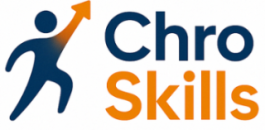
Understanding Workforce Enablement
Empowering the Employee Journey
Understanding workforce enablement entails creating an environment where employees feel supported to achieve their full potential. A key role of the Chief Human Resources Officer (CHRO) is to bridge the gap between the organization's strategic objectives and the personal development of its workforce. To effectively empower employees, CHROs must ensure they have access to the right tools and resources. This includes providing training opportunities tailored to individual roles, whether the focus is on frontline workforce effectiveness or leadership training for other positions. Such enablement solutions not only enhance business outcomes but also improve customer satisfaction and employee engagement. The work environment should encourage continuous learning as a part of fostering a culture that values growth. This approach facilitates acquiring new skills and maintaining relevance in an ever-evolving technological landscape. Moreover, CHROs should leverage data-driven strategies to make informed decisions about resource allocation and training development. By doing so, they can identify gaps and opportunities in real time, supporting employee enablement effectively. This strategy underpins long-term organizational success and boosts overall employee satisfaction, making CHROs pivotal in shaping a proactive workforce enablement framework. For more insights on how leadership can shape such attitudes, you might want to explore effective leadership traits that fortify these efforts.Strategic Vision and Leadership
Steering the Workforce with Strategic Vision
To effectively drive workforce enablement, a Chief Human Resources Officer (CHRO) must possess a strategic vision that aligns with the organization's goals. This involves a clear understanding of the broader business landscape and how the workforce can contribute to achieving business success. A strategic approach allows for the seamless integration of employee enablement tools that enhance employee engagement and performance.
Aligning workforce management with business strategy requires the CHRO to stay ahead of technology trends, ensuring that the organization is equipped with real-time data and analytics. This enables proactive decision-making and enhances resource allocation, ensuring that both frontline and strategic employees feel supported in their roles.
- Forward-Thinking Leadership: A visionary CHRO anticipates future challenges and opportunities, crafting long-term workforce strategies that address training development and continuous learning. This foresight is crucial for fostering a work environment where employees can thrive and adapt to organizational changes.
- Adaptive Solutions: As the workforce evolves, so does the need for adaptive organizational structures and processes. Incorporating enablement solutions that are flexible and responsive to change ensures that the organization can maintain high levels of employee satisfaction and customer service.
The strategic vision is not just about reacting to current trends; it's about preparing the workforce for future demands, thereby enhancing both patient care and customer satisfaction. By supporting continuous development opportunities, a CHRO ensures that the organization remains competitive and resilient in the face of industry shifts.
Communication and Interpersonal Skills
Effective Communication: The Heart of Human Resource Success
In any organization, effective communication is crucial for fostering a supportive work environment and facilitating workforce enablement. The ability of a Chief Human Resources Officer to communicate and engage with employees directly impacts employee satisfaction and engagement. A well-engaged workforce leads to increased productivity, heightened employee satisfaction, and improved customer service, ultimately benefiting the organization’s bottom line. A human resources leader must excel in various communication forms. Mastery of verbal, non-verbal, and written communication is essential, whether during face-to-face interactions, digital communication, or when shaping organizational messages. The right balance in communication helps ensure employees feel valued and informed, fostering an atmosphere conducive to trust and cooperation. Another critical aspect is active listening. Good communication is not simply about delivering messages but also about truly understanding the needs and concerns of the employees. This form of communication serves as a tool for the management to better understand the various dynamics at play, enabling them to implement better employee enablement solutions that cater to the workforce. Moreover, a Chief Human Resources Officer must serve as a bridge between frontline employees and senior management. By translating the goals and visions of the organization into actionable plans, they align business objectives with employee development opportunities. This alignment is pivotal for ensuring long-term success and patient care excellence, especially in sectors like healthcare. Communication also plays a vital role in change management, where clarity and transparency are crucial. Employees must understand the reasons behind organizational changes and the impact those changes have on their roles. Clear communication coupled with strategic resource allocation can ease transitions and enhance both employee and customer satisfaction. In the ever-evolving landscape of business, technology, and workforce enablement, maintaining effective communication is imperative. By doing so, a Chief Human Resources Officer provides real-time support to their employees, facilitating their growth, and ultimately, contributing to the organization's agility and resilience. For more insights into strategic HR leadership, check out this guide to strategic HR leadership.Change Management Expertise
Leading Through Change: A Vital Skill
In today's rapidly evolving business landscape, the ability to manage change effectively is crucial for a Chief Human Resources Officer (CHRO). Change management expertise is not just about implementing new processes or technologies; it's about guiding the workforce through transitions smoothly and ensuring employee enablement throughout the process.
Organizations often face challenges when introducing new tools or restructuring their operations. A CHRO must be adept at preparing employees for these changes, fostering an environment where they feel supported and valued. This involves clear communication, providing training development opportunities, and ensuring that employees have the resources they need to adapt. By doing so, organizations can maintain high levels of employee engagement and satisfaction, which are critical for long-term success.
Moreover, effective change management requires a data-driven approach. By analyzing data related to employee performance and feedback, CHROs can make informed decisions that align with the organization's strategic goals. This not only enhances workforce enablement but also improves customer satisfaction and service management.
Ultimately, a CHRO's ability to lead through change can significantly impact the organization's culture and business outcomes. By prioritizing continuous learning and development, they ensure that the workforce remains agile and capable of meeting future challenges head-on.













